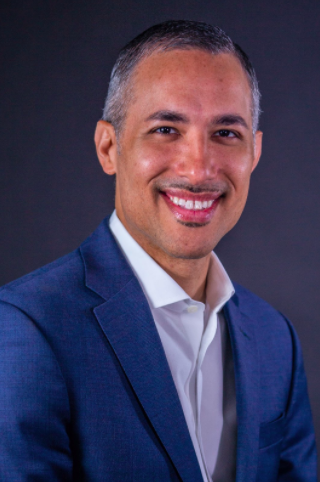Speakers Who Inspire: Daniel E. Dawes, J.D. on racial and health inequities

Daniel E. Dawes, J.D.
On Wednesday, August 16, Foundation for a Healthy St. Petersburg held a Zoom presentation of its long-running series, “Speakers Who Inspire” featuring Daniel E. Dawes, J.D., an acclaimed attorney, policy expert, and author. Dawes, a leader in the health equity, health reform, and mental health movements, is director of the Satcher Health Leadership Institute at Morehouse School of Medicine in Atlanta, Georgia.
A professor of health law, policy, and management, Dawes is the co-founder of the Health Equity Leadership and Exchange Network (HELEN), a nationwide network of over 2000 leaders and scholars working to advance evidence-based health equity-focused policies and programs.
Dawes authored 150 Years of Obamacare, chronicling the backstory of the Affordable Care Act and the health equity movement; his new book, The Political Determinants of Health, builds on his research and offers solutions to close the gaps in health outcomes.
His presentation, “Racial Inequities: Fruit of America’s Poisonous Tree,” began by reviewing various racist policies enacted by U.S. throughout the years. These policies, stated Dawes, created the ‘intentional discriminatory practices’ that led to the current health disparities plaguing the U.S.
While tracing the history of the health equity movement in the U.S., Dawes noted that there had always been push back against policies that would improve the health of all Americans. But he specifically showed that, from the beginning movement to address health disparities for Blacks newly released from enslavement through the Freedmen’s Bureau Act of 1865, it was almost another 120 years before the Disadvantage Minority Health Improvement Act of 1990.
Dawes presented slides and spoke passionately on how the health outcomes for American Blacks were jeopardized from the outset, with slavery, Jim Crow, and Segregation creating the foundational conditions of inequity.
He gave insight on additional policies – such as those that amounted to a ‘poverty tax’ levied on Blacks forcing them to pay much higher rates than whites on everything from auto insurance to mortgage loans. Other harmful policies created a dearth of services and goods available to Blacks within their neighborhoods, limiting access to fresh food, nearby pharmacies, and hospitals.
Additional harmful policies related to the placement of Black housing and homes in climate-challenged areas, or the displacement of communities due to city-planned rezoning or building. In St. Pete, these include the building of highway 275 across 22nd Street, and the displacement of the Black community in the former Gas Plant area.
Dawes referred to a slide that showed red highlighted areas in Pinellas County and St. Pete, “Redlining in the Suncoast” – referring to the practice of drawing redlines on maps, or coloring specific areas in red, to signify they were areas that Blacks lived in. This discriminatory practice was carried out by governmental agencies and banks to delineate areas where Blacks lived, to assure for denial of services or levying of higher fees for loans, mortgages, or other financial support.
He compared it to the next slide, “Where You Live Matters!” showing white life expectancy in the area at 83.3 years of age, while life expectancy for Blacks dropped to age 67 in Pinellas County.
“We know that there has been redlining in your city. When you look at the life expectancy in the community, it is no wonder that, when you overlay these redlining maps with various social determinants of health mapping that has been created, we see the disparity in terms of life expectancy,” Dawes confirmed.
He also made a connection between the demographic shifts taking place and the change in life expectancy in the country. An alarming graph of statistics showed the U.S. drop in Global Life Expectancy since 1980, when the U.S. was ranked at 14th in life expectancy. By 2018, U.S. life expectancy had dropped to 43rd in the world, and if stays on course, said Dawes, it could drop to 64th in the world by 2040.
“In 2012, the majority of births were children of color and the majority of kids under 10 were children of color. Just last year children of color under the age of 16 outnumbered white children,” he relayed. Then he pointed out that, while the U.S. lost 11 years of life expectancy from 1980 to 2010, since then the rate of loss has picked up – with the U.S. losing around 10 years of life expectancy every five years from 2010 to 2018.
While it seems apparent the increasing drop in global life expectancy in the U.S. is proportionately increasing with the birth of children of color, he also noted, “life expectancy, as a measure of health tells us a great deal about how we’re doing as a society.”
Dawes pointed out that, when broken up by race and ethnicity, “If we took all white folks in this country, and they created their own country, they would rank 50th in the world in life expectancy; if we took all Black people in this country, and they created their own country, they would rank 103rd in the world. And if we were to take all indigenous populations, the Native American nations in this country – if they created their own nation, they would rank, 143rd in the world.”
While these numbers showed the shocking inequity in health outcomes between Blacks, indigenous populations, and whites, Dawes said, “The bottom line is that we all could be doing better. We must do better — for the sake of this country.”
